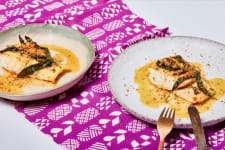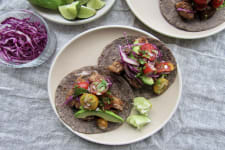People always talk about the merits of journaling. How the practice of meeting our lives on the page can help us to better experience them, each inking an utterance perhaps somehow carving out the inner testimony of the soul. Maybe this is because when we write the truth about ourselves, we are essentially documenting our existence.
For many Alaskans, believe it or not, their pantries and freezers are the ultimate journals of their lives lived in concert with nature and their environment. Their truest vessels for storytelling, the greatest archives of their experiences. This is because both pantry and freezer contain the stories of the seasons — in the form of jars of foraged mushrooms, pickled fish and vegetables, jams and jellies made of hand-picked berries; in packs of frozen fish fillets, moose meat, and dug-up clams.
In the stillness of these provisions — whether pickled or frozen, cured or smoked, dried or preserved — is held the tale of how they each came to be: a certain July evening picking fish from your family’s subsistence set net site. A perfect late-summer afternoon of blueberry-picking. That one September moose hunt that left you trembling with adrenaline. A morning of digging up razor clams with the clear sky so vibrant and perfectly cerulean that you never really shake it from your mind’s eye.
Of course, those jars on shelves or baggies in freezer drawers are containers — but they contain so much more than just food. They also carry the shared experiences of those who partook in the harvest, the stories of the moments between the moments. They hold sagas and adventures, challenges surmounted and conflicts resolved. They are a snapshot collection years past, but also a culinary vision board of what might soon grace the dinner table as a delectable dish or meal.
And springtime is when Alaskans gear up for a whole new season of stories. Setting up garden beds for the onslaught of perfect summer sun. Preparing vessels and mending nets in advance of the summer salmon season. There is an anticipatory feeling in the air, a certain knowing that the full expression of the season will bring on a bounty so bountiful that it will, like last year, end up preserved in many of those aforementioned magic jars.
Ultimately, in Alaska, the act of subsistence fishing, hunting and gathering, and preservation is also very much one of sharing. When a visitor appears, it’s not uncommon to trade, say, a couple jars of raspberry jam for a fillet of sockeye salmon. These foods are a living currency, binding human to human in a timeline drawn by Mother Nature.
And so it is, dear members, that we share this timeline with you, loading up your freezers with not just some of the most delicious, nutrient-rich food on the planet, but with a connection to the stories of Alaska, to its cycles and seasons, and to the shared experiences of all those who made this incredible seafood possible.
In the spirit of freezers, I’ll leave you with some inspiration on the subject of cooking from frozen, which can work out really well when you’re in a pinch. Like on those days when your to-do list is infinite, but you still want to cook and eat something special. For that, I might opt for this equal-parts-ease-and-elegance Air Fryer Teriyaki Salmon recipe, designed to cook from frozen at a moment’s notice. Honestly, so many of my favorite cooking methods work well from frozen, including steaming and air-frying, as mentioned above.
With that, we wish you a happy springtime and invite you to create your own shared experiences around the table, and keep those stories going.
Live Wild!
Monica
Pictured above: Starting in upper left corner, the first wild strawberries grown in the soil in front of our Homer cabin, whose seeds were planted by the hands of our toddler son, who himself is pictured to the right in a life jacket, in the midst of a story of his own at sea with us. To his left, a basket of blueberries harvested by his grandmother, Arron's mom, who also picked and cleaned the two plates of boletus mushrooms seen below. In the middle, a plate of sockeye, which was cooked on an open fire by our teammates, for our teammates, during one of the most memorable events together on the beach of Kachemak Bay. Below that, Arron and I aboard the Mary K, his dad's salmon fishing vessel. The upper right corner features one of my first contributions to our own home's culinary archives, jars of Alaskan spot prawn stock. In the lower right, you'll see foraged morel mushrooms, also picked by Arron's mom, who told me that they tend to show up after wildfires; as well as a harvest of raspberries, and my husband's initials scratched into the table of his father's boat, likely on a summer during his youth as a deckhand.






